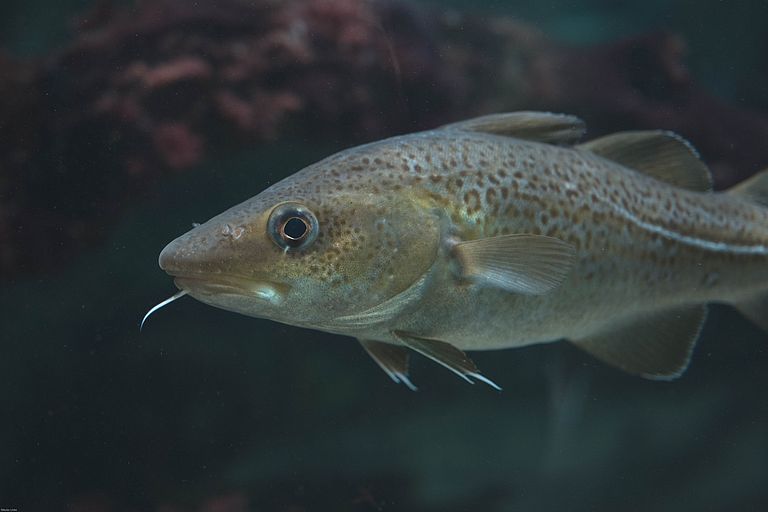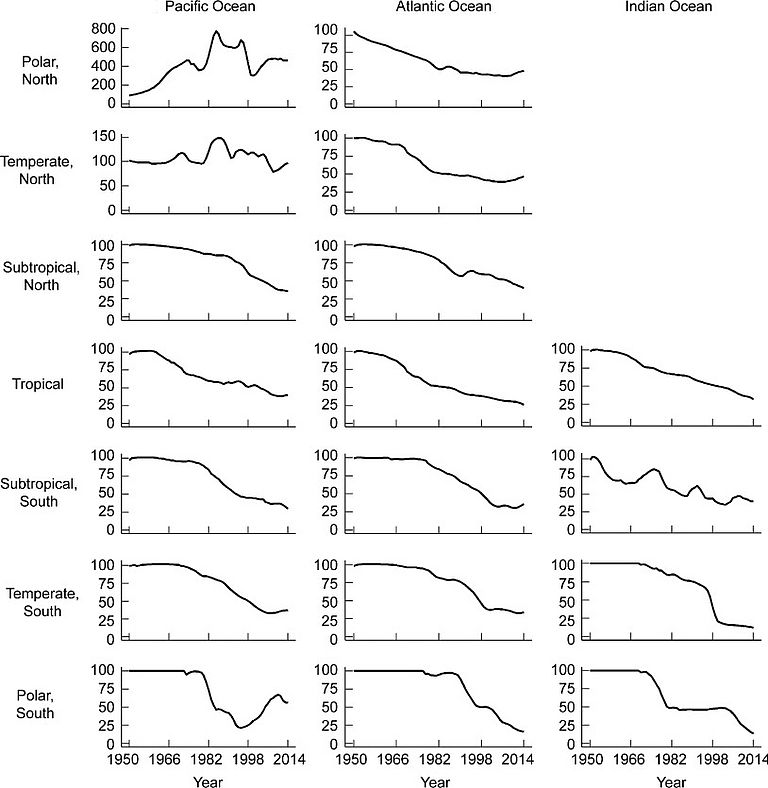Populations of popular food fish are declining globally
New studies also show opportunities for fisheries management through Corona
Numerous populations of popular food fish, such as cod, herring, saithe or sea bass, are declining. The same applies to populations of invertebrates such as certain species of crab and octopus, which are also of interest to the fishing industry. This is the result of an assessment of more than 1300 fish and invertebrate populations carried out by researchers from the University of British Columbia (UBC, Canada), the GEOMAR Helmholtz Centre for Ocean Research Kiel and the University of Western Australia (Australia).
‘This is the first global study of long-term trends in the population biomass of fished marine organisms, including invertebrates, for all coastal areas of the world,’ says Maria 'Deng' Palomares, manager of the Sea Around Us initiative at the UBC's Institute of Oceans and Fisheries. She is the lead author of the study, which has now been published in the international journal Estuarine, Coastal and Shelf Science. Co-author Dr. Rainer Froese from GEOMAR adds: ‘We looked at the development of the populations of the most important species over the past 60 years. The biomass of most of them is currently far below the level that would allow optimal catches’.
In this context, biomass is understood as the weight of fish and marine invertebrates of a given population that is still in the water, and which is susceptible to being caught by fishing gears.
Of the populations analyzed in this study, 82 percent are below the level that can produce maximum sustainable yields. ‘This is because they are being or have been caught at a rate that takes out more than is regrown. As a result, fishermen catch less and less over time, even though they fish longer and harder,’ Dr. Froese emphasizes.
For the study, the international team used a new, computer-based method for stock assessment developed at GEOMAR which earlier this year won the Ocean Awards 2020 price for most influential science for ocean conservation. For the first time, it allows statements to be made about stocks for which only limited data are available.
The study shows only isolated exceptions to the general downward trend. For example, the population biomass in the subpolar zone of the northern Pacific increased by around 800 percent and by around 150 percent in the temperate zone. ‘Global warming plays a role here, extending the range of several commercially important species into the polar seas,’ says Rainer Froese.
In a second study, published this week in the journal Marine Policy, the authors looked specifically at the populations around the British Isles that are important for fisheries. Here too, many stocks are overfished. However, the COVID-19 pandemic— as in many other marine regions—is causing a significant decline in fishing activity. Against this background, the researchers are proposing future fishing quotas that are slightly lower than the maximum sustainable yield.
‘Maximum sustainable yield is defined as the highest catch that can be continuously taken from a stock under existing environmental conditions,’ says Rainer Froese, who is also co-author of this study. ‘Intelligent fisheries management, as applied in Australia, aims for a little less. This reduces the risk of accidental overfishing. It also makes the populations more resistant to environmental change’.
‘The COVID-19 pandemic now provides an opportunity to implement this goal in fisheries management. Then, following the Brexit, Britain could insist in its negotiations with the EU that the catch quotas recommended by scientists are not exceeded,’ says Daniel Pauly, co-author of the study and head of the Sea Around Us Initiative at UBC.
‘Even though this study specifically looks at populations in the British economic zone, it shows that a shift towards sustainability is possible. The already slowed fishing activities during the COVID-19 pandemic would be a good opportunity to do so. As the global population estimate shows, this change is urgently needed so that future generations can continue to obtain abundant food from the sea,’ summarizes Dr. Rainer Froese.
References:
Palomares, M. L. D., R. Froese, B. Derrick, J.J. Meeuwig, S.-L. Nöel, G. Tsui, J. Woroniak, D. Zeller, D. Pauly (2020): Fishery biomass trends of exploited fish populations in marine ecoregions, climatic zones and ocean basins. Estuarine, Coastal and Shelf Science, https://doi.org/10.1016/j.ecss.2020.106896
Kemp, P. S., R. Froese, D. Pauly (2020): COVID-19 provides an opportunity to advance a sustainable UK Fisheries Policy in a post-Brexit brave new world. Marine Policy,
https://doi.org/10.1016/j.marpol.2020.104114




